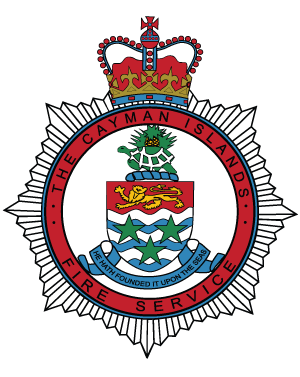Preparing for Aviation Emergencies
Published 21st October 2016, 12:38pm
First responders with the Cayman Islands Fire Service (CIFS) battled a blaze this week that put their knowledge and skills to the test, during intense aviation fire training.
Firefighters experienced real conditions in real-time during the Aviation Bridging Course which took place at the fire training ground.
The compound is set up with a life-sized mock airplane, which roaring fires can be set in and around, to simulate actual situations that occur when an aircraft experiences trouble.
Chief Fire Officer David Hails said the bridging course was an opportunity for local firefighters, who normally deal with domestic fires, to learn the ropes of aviation firefighting.
“What we are trying to do is introduce a level of flexibility within the Cayman Islands Fire Service,” he explained. “Right now we have two distinctly different departments, we have aviation and domestic. Our aim is to cross train personnel so they have the ability and knowledge to work in both departments. That gives us more flexibility and increases our capability to provide a first rate fire service for the Cayman Islands.”
The seven firefighters, plus a supervisor, learned how to function as a team to rescue passengers, set up proper evacuation paths, deal with visibility issues such as thick smoke, create survivable conditions and react in a split second to any number of situations.
Watch Manager Lee Goupillot, with the International Fire Training Centre (IFTC) in northeast England, travelled to Grand Cayman to ensure local firefighters receive adequate training.
“Structural firefighting has a more controlled approach in regards to timeframe, while aviation has to work on an extremely strict timeframe,” he explained.
“This timeframe is around three minutes, so if there was a major aircraft accident the fire crews have approximately three minutes to control the fire and start the rescue process.”
Mr Goupillot said training also took place off the field. Firefighters also participated in a four-day classroom course with 20 different lessons, designed to develop an expert level of knowledge about aircraft and aviation fire techniques.
He said, “We taught them everything from aviation communication to the different terminology used when fighting an aviation fire, as well as everything about an aircraft, its construction, how it flies, how it stays in the air, how it lands. We also looked at components such as engines and undercarriages, what happens after an incident occurs and how you preserve evidence, because after an aircraft accident there will be an investigation.”
Chief Hails said it is extremely important for firefighters to receive this type of training on a quarterly basis.
“Firefighters don’t go to aircraft fires every day, so it is vital to get the exposure on the fire ground to ensure that everyone has maintained those skills, and that they can fight aviation fires practically and efficiently,” he explained.
Fire Officer Nicholas Peralta agreed and said he believes everyone on the team has benefited tremendously from the experience.
“Over the past two weeks it’s definitely been an eye-opener for me because I have never done aerodrome training,” he said. “I now have more confidence in myself, and if we did have a real aviation fire emergency I would know exactly what to do and how to handle the situation.”
Leading Fireman Duronnie Myles joined the Fire Service in 1999. He said he’s been fighting domestic fires for 17 years and never knew what went into aviation firefighting until now.
“Being able to get this type of hands-on experience has been unbelievable. I have learned so much in the classroom and on the training field,” he explained. “These past two weeks have been a learning experience for all of us, and we hope to make the Cayman Islands Fire Service proud.”
On Friday, 21 October 2016 the firefighters will be tested with a 50 question multiple choice technical assessment. Mr Goupillot said once the team passes the aviation exam they will receive their certification, which is internationally recognised.
“Making the transition from domestic firefighting to aviation can be difficult; however this group has adapted extremely well and is eager to learn what needs to be done,” he said.
Chief Officer for the Ministry of Home Affairs Mr Wesley Howell said, “I would also like to extend my congratulations to all of the Officers who embraced this opportunity to broaden their knowledge, skills and experience relative to this important aspect of fire-fighting. This demonstrates their commitment and dedication, not only to providing the best quality of service possible, but also to our vision which is to build a world class Fire Service.”
Chief Hails added the Fire Service will continue to send firefighters to IFTC to take various courses; however group training courses can now take place regularly on the fire ground. The training and qualification provided by IFTC is recognized around the world as being amongst the best out there and our Fire Officers should be proud of their achievements.
“The training facilities were assessed and it was decided that the facilities were good enough to carry out training on Island and then bring the expert from the U.K.,” he said. “To have the instructor come to this location and participate in training is a massive bonus for us and it is very cost effective as well.”
Mr Howell added the Ministry fully supported the proposal to bring an overseas trainer on board, which not only resulted in significant savings but enabled more staff to participate in the training courses.
“I would like to commend Chief Hails for identifying this training opportunity for our CIFS personnel, which has benefitted each of them individually and contributed directly to the improved capacity, efficiency and effectiveness of the Fire Service,” he said.


